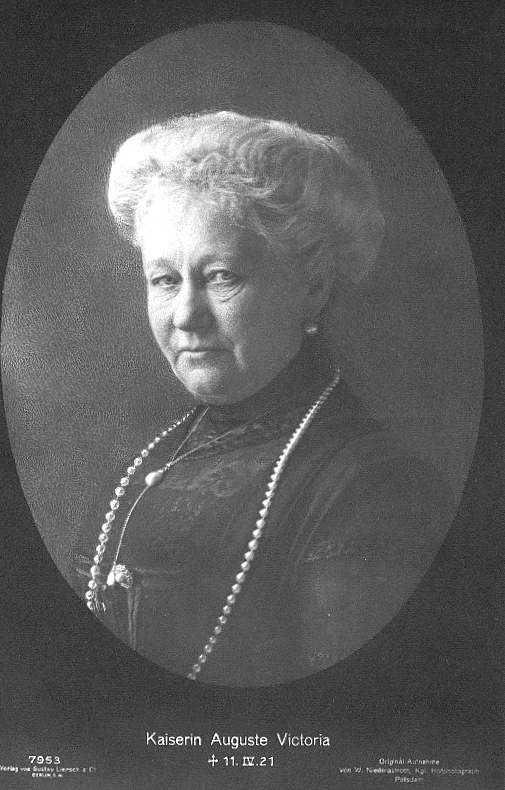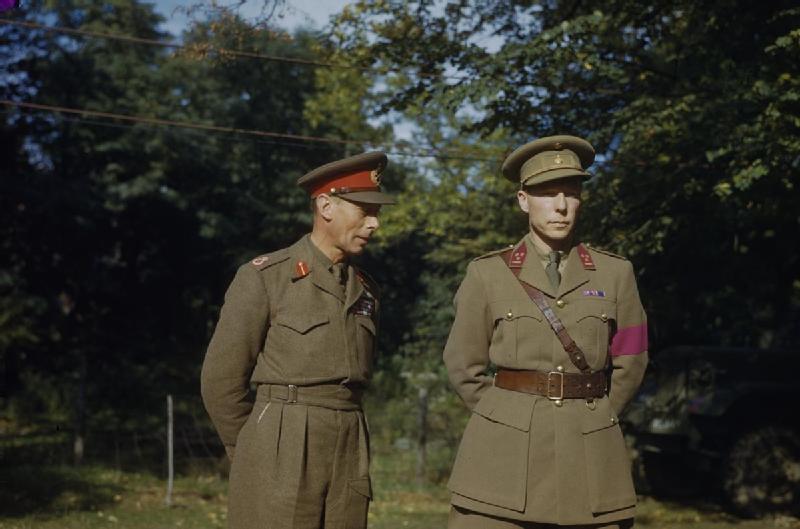by Susan Flantzer © Unofficial Royalty 2013

Credit – Wikipedia
“On Shrove Tuesday 1669, I to the Abbey went, and by favour did see the body of Queen Catherine of Valois, and had the upper part of the body in my hands, and I did kiss her mouth, reflecting upon it I did kiss a Queen: and this my birthday and I thirty-six years old and I did kiss a Queen.” Samuel Pepys, an English naval administrator and Member of Parliament who is most famous for the diary he kept during the years 1660-1669, wrote this in his diary on his 36th birthday.
The queen was Catherine of Valois, wife of King Henry V of England, mother of King Henry VI of England, and grandmother of Henry Tudor who became King Henry VII of England. During renovations of Westminster Abbey in the reign of King Henry VII, Catherine’s tomb was destroyed (some say to distance her grandson Henry VII from his illegitimate ancestry) and her remains were placed in a wooden coffin and kept above ground. Abbey vergers charged a shilling to take off the coffin’s lid so curious visitors could view Catherine’s corpse. Her coffin remained a public spectacle for over 200 years until it was buried in the Villiers Vault in the St. Nicholas Chapel of Westminster Abbey in 1778. In 1878, Catherine’s remains were re-buried in a new altar tomb of Henry V’s Chantry in Westminster Abbey.

Tomb of Catherine of Valois; Credit – https://www.westminster-abbey.org/abbey-commemorations/royals/henry-v-and-catherine-de-valois/
Catherine of Valois was born a French princess on October 27, 1401, the tenth of the twelve children of King Charles VI of France and Isabeau of Bavaria. Once known as Charles the Beloved, Catherine’s father became known as Charles the Mad when he began to suffer bouts of insanity in 1392 which continued throughout his life. During one bout, Charles thought that he was made of glass and acted in ways that caused him to protect himself so that he would not break. Catherine’s son King Henry VI of England also suffered from similar bouts and it is possible that they were both suffering from porphyria, which is a hereditary disease believed to have plagued King George III of Great Britain, a descendant of Catherine of Valois through one of her sons by Owen Tudor.
Catherine had eleven siblings:
- Charles, Dauphin of Viennois (born and died 1386)
- Jeanne (1388 – 1390)
- Isabella (1389 – 1409), married (1) Richard II, King of England, no issue (2) Charles, Duke of Orléans, had issue
- Jeanne (1391 – 1433), married John V, Duke of Brittany, had issue
- Charles, Dauphin of Viennois (1392 – 1401), died young
- Marie (1393 – 1438), unmarried, became a nun
- Michelle (1395 – 1422), married Philip the Good, Duke of Burgundy, no surviving issue
- Louis, Dauphin of Viennois (1397 – 1415), married Margaret of Burgundy, no issue
- John, Dauphin of Viennois (1398 – 1417), married Jacqueline, Countess of Hainaut, no issue
- King Charles VII of France (1403 – 1461), married Marie of Anjou, had issue
- Philip (born and died in 1407)
Most notable of Catherine’s seven siblings who reached adulthood is King Charles VII of France who was the Dauphin helped by Joan of Arc during the Hundred Years War and Isabella of Valois who was the second wife and widow of King Richard II of England. King Henry IV had usurped the throne from his cousin King Richard II. It is thought that Richard starved to death in captivity on or around February 14, 1400, but there is uncertainty over the date and manner of his death. King Henry IV then decided the widowed Queen Isabella should marry his son, the future King Henry V of England, but she refused. Knowing her husband was dead, she went into mourning, ignoring King Henry IV’s demands. Eventually, Isabella was allowed to return to France where she married a second time and died in childbirth at the age of 19.
King Henry IV had started negotiations to marry Catherine to his heir Henry, but he died before the negotiations were completed. The new king, Henry V, continued the marriage negotiations. He was eager to regain all the French land that previous English kings had lost over the centuries and reign in both England and France. He intended to accomplish this either by conquest or marriage. As a dowry, King Henry V demanded two million crowns and the return of Normandy and Aquitaine. The French refused and King Henry V declared war. According to contemporary writers, Catherine took pride in the fact that she was worth fighting for and was eager to marry Henry. Following many defeats including the great English victory at the Battle of Agincourt, the French agreed to the marriage. A peace treaty was agreed upon in May 1420 and one of the provisions was that King Charles VI of France would acknowledge King Henry V of England as his heir. Catherine and Henry were married at Troyes Cathedral in France on June 2, 1420. Despite the peace treaty, fighting still continued and Catherine spent the first few months of her marriage accompanying Henry from battle to battle.

Marriage of King Henry V of England and Catherine of Valois; Photo: Wikipedia
Eventually, the couple returned to England, and Catherine was crowned Queen of England at Westminster Abbey on February 23, 1421. By the summer, Catherine was pregnant and Henry was returning to France to continue with his military campaigns. Henry was superstitious and had warned Catherine against giving birth at Windsor Castle. Catherine did not listen to him and on December 6, 1421, gave birth to a boy at Windsor Castle:
Upon hearing the news of his son’s birth, King Henry V said to his chamberlain Lord Fitz-Hugh, “I, Henry born at Monmouth, shall small time reign and much get, but Henry born at Windsor shall long reign and lose all.” Within nine months, his prophecy came true. On August 31, 1422, King Henry V died of dysentery, nine days before his 36th birthday, having reigned nine years, and his son King Henry VI at the age of nine months started his 40 years on the throne. Catherine was left a widow at the age of 21.
The two surviving brothers of King Henry V played important roles during the minority of King Henry VI. John, Duke of Bedford, was appointed Regent of the Realm and was in charge of the ongoing war in France. During Bedford’s absence, the government of England was headed by King Henry V’s other surviving brother, Humphrey, Duke of Gloucester, who was appointed Protector and Defender of the Realm. His duties were limited to keeping the peace and summoning Parliament.
Because Catherine was still quite marriageable, a bill was passed in Parliament setting the rules for the remarriage of a queen dowager. The bill stated that if a queen dowager married without the king’s consent, her husband would lose his lands and possessions, but that any children of the marriage would not suffer any consequences. A “Catch 22” which would seem not to allow Catherine to marry any time soon stated that permission could only be granted once the king had reached his majority. At the time of the bill’s passage, Henry was six years old.
With Catherine being a young widow and with apparently no chance of remarriage, it should not seem unusual that an amorous relationship would be likely. Owen ap Maredudd ap Tudor (in Welsh Owain ap Maredudd ap Tewdwr) was a Welsh soldier and courtier, descended from a daughter of the Welsh prince Rhys ap Gruffudd. He served in Catherine’s household and their relationship began when Catherine was living at Windsor Castle. There is much debate as to whether Catherine and Owen married. No documentation of marriage exists and even if they did marry, their marriage would not have been legal due to the act regarding the remarriage of a queen dowager. From the relationship between Owen Tudor and Catherine of Valois descended King Henry VII of England and the Tudor dynasty. The British royal family and many other European royal families descended from their great-granddaughter Margaret Tudor.
It is uncertain how many children Catherine and Owen had. The following four can be verified:
- Owen Tudor (1429 – 1502), also known as Thomas and Edward, a monk at Westminster Abbey
- Edmund Tudor, 1st Earl of Richmond (1430 – 1456), married Lady Margaret Beaufort, had one son Henry Tudor, the future King Henry VII. Edmund died of the plague shortly before his son’s birth.
- Jasper Tudor, 1st Earl of Pembroke and 1st Duke of Bedford (1431 – 1495), married Catherine Woodville (sister of Elizabeth Woodville, wife of King Edward IV of England), no children
- Margaret Tudor (born before January 1437), died in infancy
Catherine died at the Abbey of St. Saviour in Bermondsey, London, England on January 3, 1437, following the birth of her last child and was buried in Westminster Abbey. After her death, Catherine’s two sons Edmund and Jasper went to live with Katherine de la Pole, Abbess of Barking, sister of William de la Pole, 1st Duke of Suffolk. Katherine de la Pole persuaded King Henry VI to take an interest in the boys, who were his half-brothers. King Henry VI eventually gave his two Tudor half-brothers the rank of Earl and also issued an edict that the legitimization of his two Tudor half-brothers was unnecessary.
Owen Tudor became an early casualty of the Wars of the Roses between the House of Lancaster and the House of York. On February 2, 1461, Owen, at the age of 60, unsuccessfully led the Lancastrian forces at the Battle of Mortimer’s Cross against the Yorkists led by Edward, Earl of March (the future King Edward IV). Owen was beheaded at Hereford along with other prisoners and was buried there. Before his execution, he is alleged to have said that “the head which used to lie in Queen Catherine’s lap would now lie in the executioner’s basket”.
Catherine’s son with King Henry V, King Henry VI, reigned in England from 1422 to 1461 and again from 1470 to 1471. From 1455 onward, the Wars of the Roses tore the country apart literally and emotionally. After the Yorkist victory at the Battle of Tewkesbury where King Henry VI’s only child Edward of Westminster, Prince of Wales was killed, King Henry VI ultimately lost his crown to the Yorkist King Edward IV. Henry was imprisoned in the Wakefield Tower at the Tower of London and died, most likely by murder, during the night of May 21/22, 1471.
This article is the intellectual property of Unofficial Royalty and is NOT TO BE COPIED, EDITED, OR POSTED IN ANY FORM ON ANOTHER WEBSITE under any circumstances. It is permissible to use a link that directs to Unofficial Royalty.
England: House of Lancaster Resources at Unofficial Royalty


















